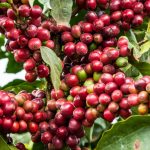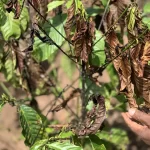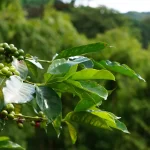Uganda, renowned as the world’s largest exporter of Robusta coffee, is celebrated for its rich and full-bodied coffee flavors. While coffee is cultivated across various regions in Uganda, the largest coffee producing district is Bugisu. Nestled in the eastern part of the country on the slopes of Mount Elgon, Bugisu boasts a favorable climate, high altitudes, and well-drained soil that are ideal for coffee production. In this comprehensive guide, we will delve into the coffee heritage of Bugisu, the coffee varieties grown, processing methods employed, the economic significance of coffee production, and the challenges faced by coffee farmers in this thriving district.
History of Coffee Production in Bugisu
The history of coffee production in Bugisu dates back to the early 1900s when British missionaries introduced coffee cultivation to the region. Since then, coffee has become an integral part of Bugisu’s culture and economy.
Coffee Varieties Grown in Bugisu
The primary coffee variety grown in Bugisu is Robusta, known for its robust flavor and high caffeine content. However, some Arabica coffee is also cultivated in the region, showcasing the diversity of coffee types within Bugisu.
Coffee Processing Methods in Bugisu
Coffee processing plays a crucial role in determining the flavor profile of the beans. In Bugisu, the most commonly used processing method is the washed method, which involves removing the fruit and mucilage from the coffee beans before drying. This method results in clean and bright coffee with a mild flavor.
Additionally, some coffee in Bugisu is processed using the natural method, where the beans are dried with the fruit and mucilage still attached. This imparts a more intense flavor and body to the coffee.
Furthermore, Bugisu is known for its honey-processed coffee, a method that falls between washed and natural. In this process, the beans are dried with some of the fruit and mucilage still attached, creating a coffee with a complex and nuanced flavor profile.
Economic Importance of Coffee Production in Bugisu
Coffee production is a cornerstone of Bugisu’s economy, providing livelihoods to over 100,000 people in the district. The revenue generated from coffee exports significantly contributes to the local economy, making it a vital economic driver.
Challenges Facing Coffee Farmers in Bugisu
Despite its prominence, coffee farming in Bugisu is not without challenges. Coffee farmers grapple with issues such as fluctuating coffee prices, pests and diseases, and the impact of climate change. These challenges require innovation and resilience within the coffee farming community.
Conclusion
Bugisu stands as Uganda’s largest coffee producing district, deeply rooted in a coffee tradition dating back to the early 1900s. Coffee, particularly Robusta, thrives in Bugisu’s favorable climate and high-altitude terrain. The district’s economic stability is closely tied to coffee production, providing income and employment opportunities for many. Nevertheless, coffee farmers in Bugisu face their fair share of challenges, from price fluctuations to environmental threats.
How to Support Coffee Farmers in Bugisu
You can play a part in supporting coffee farmers in Bugisu by:
- Purchasing coffee from Bugisu-based cooperatives: Buying coffee directly from cooperatives ensures fair compensation for farmers and sustains the local coffee industry.
- Donating to organizations that support coffee farmers: Numerous organizations work tirelessly to empower coffee farmers in Bugisu by providing access to resources, training, and assistance in overcoming challenges.
In conclusion, Bugisu, with its rich coffee heritage and economic significance, continues to be a vital hub in Uganda’s coffee industry. By supporting coffee farmers and raising awareness about the challenges they face, we can contribute to the resilience and prosperity of this remarkable coffee-producing district.







